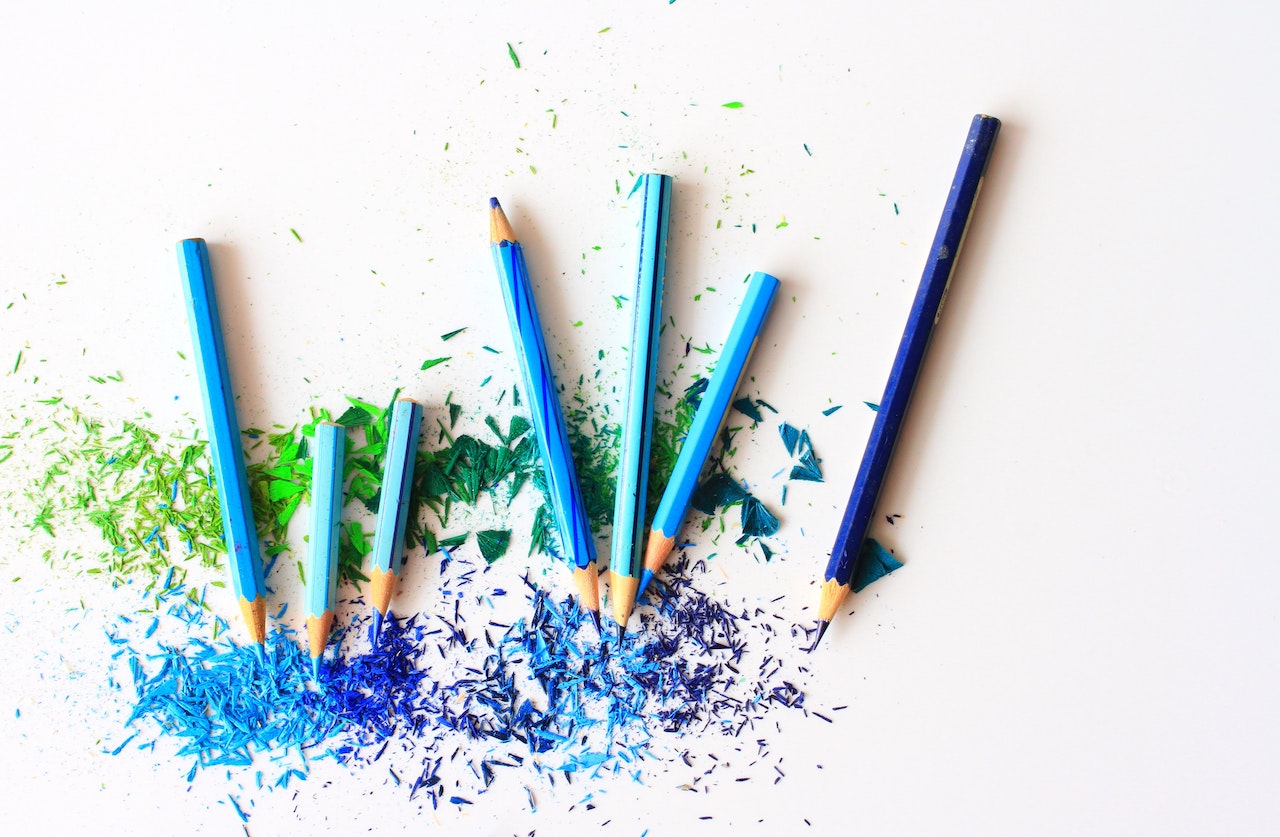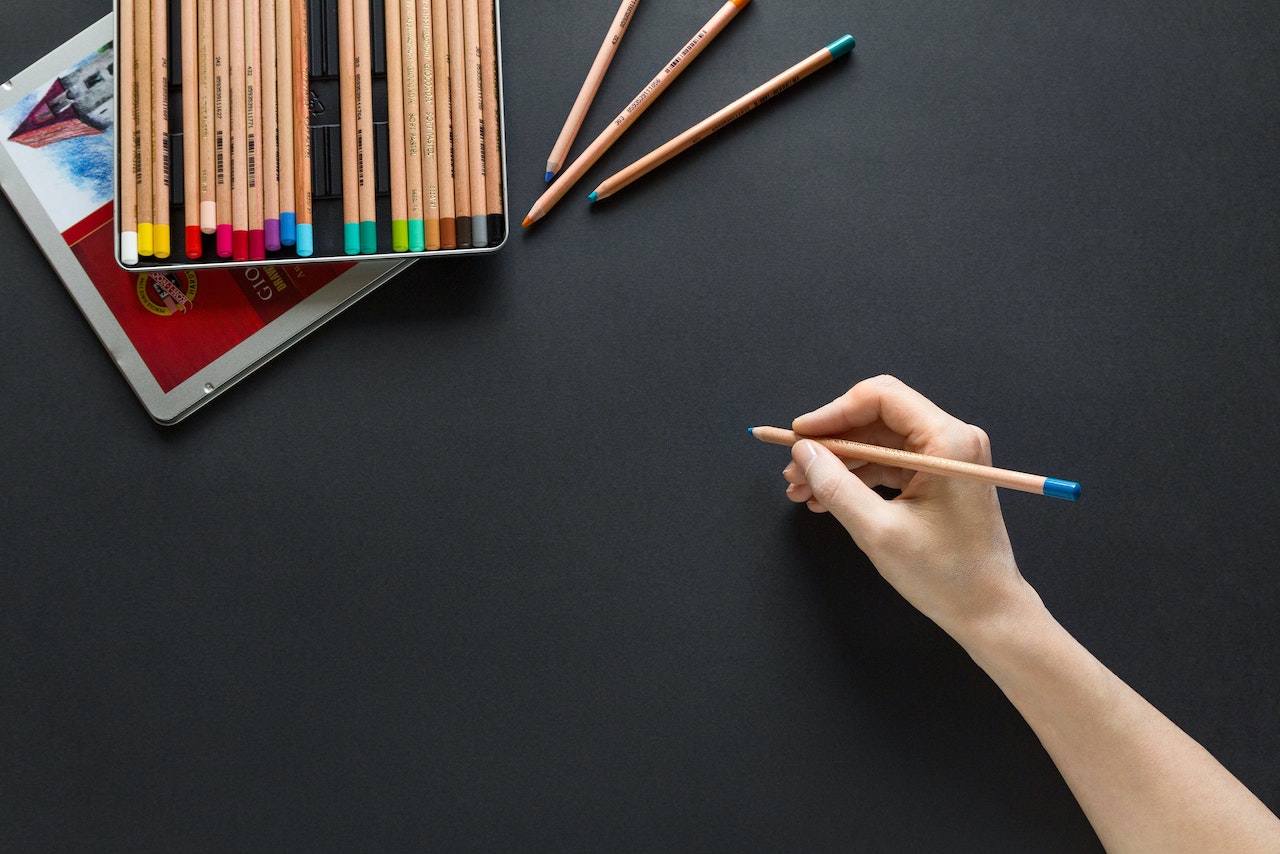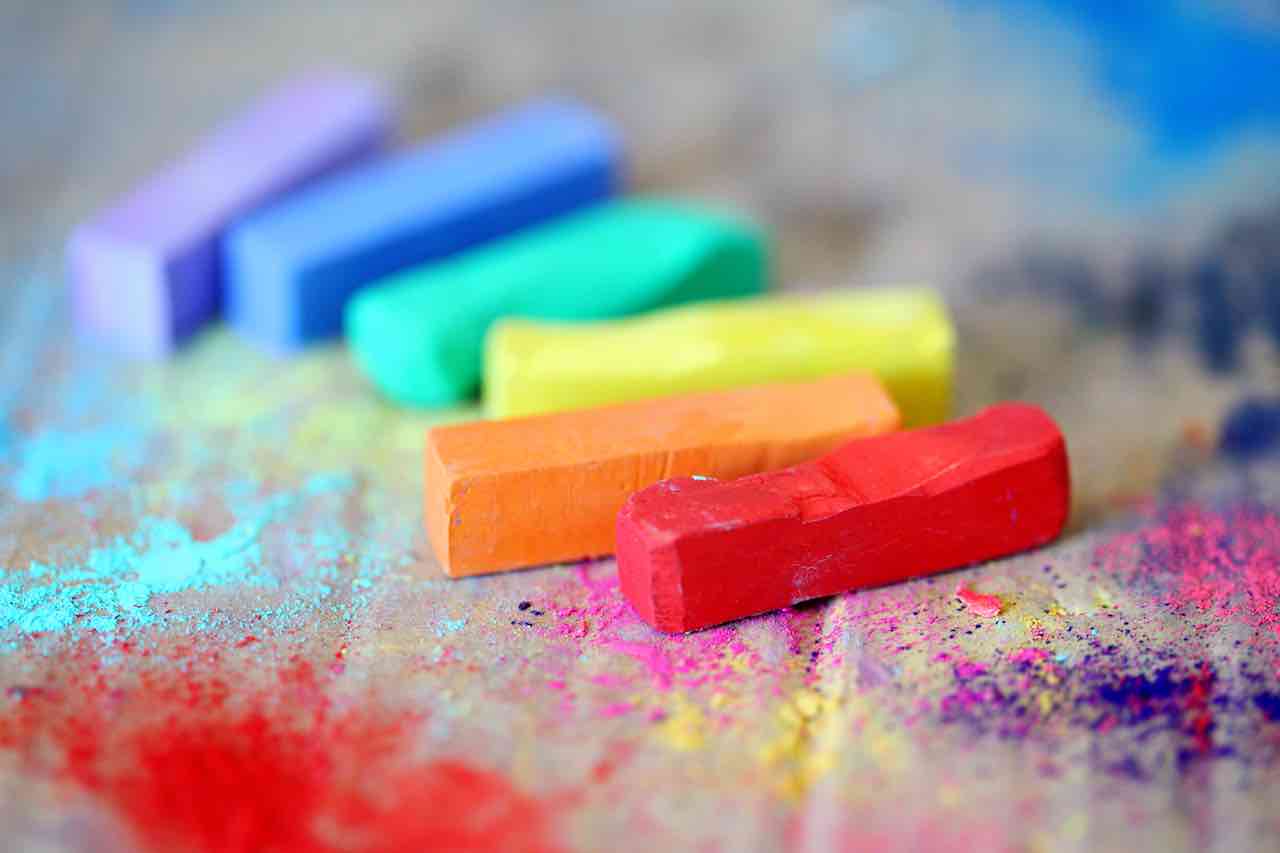The Complete Guide to Adult Coloring for Relaxation and Stress Relief

We've always been passionate about the transformative power of books and the arts at Willrose Books. Over the years, we've observed an intriguing trend: the rise of adult coloring books.
These aren't the simple coloring pages of our childhood; they're intricate, detailed, and designed specifically for adults. But what's driving this trend? Let's dive deep into the therapeutic world of adult coloring!

1. The Phenomenon of Adult Coloring
The past decade has witnessed a surprising cultural shift: the surge in popularity of adult coloring books. Gone are the days when coloring was deemed a mere child's pastime. Today, the aisles of bookstores and online platforms are filled with coloring books catering specifically to adults. These intricate designs range from sprawling landscapes and complex geometric patterns to whimsical character illustrations and inspiring quotations.
While some may dismiss this as a fleeting trend, the global sales and the sheer number of enthusiasts tell a different tale. Many adults, weary from the grind of daily life, have found solace in the simple act of adding color to paper. But why are these books so appealing? The answer might lie beyond the aesthetics. While the beautiful patterns and designs captivate the eyes, it’s the therapeutic act of coloring that captures the heart and mind.
Unlike the children's versions, adult coloring books are characterized by their intricate details. These details demand focus and allow adults to immerse themselves entirely, providing a much-needed break from the digital distractions that often dominate our lives. As adults navigate through these complex designs, there's a sense of accomplishment in bringing a black-and-white page to vivid life.
The surge in adult coloring books' popularity signifies a deeper human need for outlets of relaxation and creative expression. In a world increasingly dominated by screens, many are turning back to tangible, offline activities that offer a respite from the overwhelming influx of information and connectivity.

2. The Psychological Benefits of Coloring
At its core, coloring is much more than filling spaces with pigment; it's a journey into the self. This journey often leads individuals into a meditative state, where the mind's incessant chatter fades, replaced by a focus on the present moment. As the colored pencil or marker glides across the paper, worries and stresses seem to melt away, leaving behind a sense of calm.
The realm of coloring is devoid of rules, offering a canvas for genuine self-expression. The choice of colors, the intensity of shades, and even the way one colors—be it meticulous or carefree—all reflect an individual's emotions at that moment. For many, this freedom to express without judgment becomes a form of silent introspection, a way to understand one's feelings better.
Beyond introspection, the act of coloring taps into the brain's reward center. Completing a design or a segment of it releases dopamine, the "feel-good" neurotransmitter. This not only fosters a sense of accomplishment but also boosts mood and morale. Over time, regular coloring can become a tool for emotional regulation, helping individuals navigate their emotions more effectively.
In the vast realm of therapeutic activities, coloring stands out for its accessibility and simplicity. One doesn't need to be an artist or even particularly skilled. All that's required is a willingness to engage and express, making it a universally appealing form of psychological self-care.

3. Coloring as a Stress-Reliever
Stress, in today's frenzied world, has become an unwelcome constant for many. Amid the cacophony of deadlines, responsibilities, and information overload, the mind craves moments of respite. Adult coloring books have emerged as an oasis in this scenario. The rhythmic motion of coloring, the gentle scratching sound of pencil on paper, and the gradual revelation of a vibrant masterpiece work in tandem to anchor the mind.
Color psychology plays a pivotal role in this stress-relief process. Certain colors, like blues and greens, are known to induce feelings of calm and relaxation. On the other hand, brighter hues like reds and yellows can invigorate and energize. As individuals select and fill in colors, they subconsciously create a palette that mirrors—and subsequently influences—their emotional state.
Furthermore, the act of coloring is predictable and controllable, unlike many aspects of life. This predictability provides a sense of security. Knowing that a blue pencil will always shade in blue, that staying within a line will produce a defined shape, grants a reassuring stability in an otherwise unpredictable world.
In essence, the simple act of coloring acts as a buffer, shielding the mind from external pressures. Each colored page becomes a testament to a moment of tranquility, a personal sanctuary crafted by one's own hands.

4. The Mindfulness Aspect of Coloring
Mindfulness, a practice rooted in ancient traditions, has found its way into modern therapeutic approaches due to its profound benefits. At its heart, mindfulness is about anchoring oneself to the present, experiencing each moment in its entirety. Coloring, in many ways, embodies this principle.
As one colors, the world fades away, narrowing down to the page in front and the color being applied. This intense focus on the present moment pushes aside lingering thoughts about the past or anxieties about the future. The mind, often scattered in a million directions, coalesces into a singular point of concentration.
This state of heightened awareness is not merely about the coloring itself but also about the sensory experiences that accompany it. The tactile feel of the paper, the rhythm of breathing, the sensation of the coloring instrument in hand, and even the gentle scratchy sound it makes against the page—all contribute to a multisensory immersion. This immersion is a form of grounding, a technique often recommended in mindfulness practices to anchor individuals to the present.
Regular engagement with coloring can cultivate a habit of mindfulness. Over time, this can translate to other activities as well. Whether it's savoring a meal, listening to music, or simply taking a walk, the mindfulness nurtured through coloring can enhance the depth and richness of everyday experiences.
The implications of this are profound. A mind trained in mindfulness becomes more resilient, better equipped to handle stress, and more appreciative of life's simple joys. In a world that often feels overwhelming, the sanctuary of the present moment, which coloring helps facilitate, becomes invaluable.

5. Coloring and Sleep
Sleep, a fundamental human need, has become elusive for many in our digitally-saturated era. The omnipresent blue light from screens, known to disrupt our circadian rhythms, is a significant culprit. As people hunt for solutions to improve their sleep quality, coloring emerges as a beacon of hope.
Engaging in coloring during the evening hours provides a gentle transition from the hustle and bustle of the day to the calm required for sleep. As the mind unwinds with each stroke of color, the body follows suit, with muscles relaxing and heart rate gradually slowing down. This natural progression prepares the body and mind for a restful night.
Furthermore, replacing screen time with coloring reduces exposure to blue light, which interferes with melatonin production—a crucial hormone regulating sleep. By making coloring a part of one's nighttime routine, one essentially creates a buffer, shielding the body from factors detrimental to sleep.
Recommendations for better sleep often include establishing a routine and creating associations that signal the brain it's time to wind down. Incorporating coloring into this routine can serve as a powerful cue, signaling the body and mind that the day is done, and it's time to rejuvenate through rest.

6. Physical Benefits of Coloring
While the mental and emotional benefits of coloring are often highlighted, its physical advantages cannot be overlooked. For starters, coloring demands a certain level of dexterity and coordination. The intricate designs in adult coloring books require precision, which in turn hones fine motor skills.
This enhancement of motor skills is especially beneficial for older adults. As age progresses, maintaining fine motor coordination can become challenging. Regular coloring sessions can act as exercises, keeping these skills sharp. For those recovering from injuries or surgeries that affect hand mobility, coloring can be a therapeutic addition to their rehabilitation regimen.
The repetitive hand movements involved in coloring can also have a soothing effect on the muscles, much like the rhythmic motions of knitting or crocheting. For individuals with conditions that cause hand tremors or shakiness, this activity can provide a gentle way to stabilize and strengthen hand muscles.
Beyond the hands, coloring impacts posture. Engaging in coloring encourages individuals to maintain a seated position for extended periods, emphasizing the importance of proper ergonomics. With the right setup, it can foster better posture and reduce the risk of musculoskeletal discomfort.

7. Emotional Healing Through Coloring
Art has long been recognized as a conduit for emotional expression and healing. Coloring, a facet of this vast artistic landscape, provides a safe space for emotional exploration. For those grappling with intense emotions or traumatic experiences, translating these feelings into colors and patterns can be therapeutic.
When words fall short, colors step in. A dark shade might represent sorrow, a vibrant hue could signify joy, and a chaotic pattern might echo inner turmoil. By externalizing these emotions onto paper, individuals often find it easier to process and understand their feelings. This act of externalization provides a sense of control, enabling one to confront and manage overwhelming emotions.
Furthermore, coloring provides an avenue for positive reinforcement. Completing a page or even a segment of a design brings about a sense of accomplishment. Over time, this can boost self-esteem and confidence, essential components for emotional well-being.
The emotional benefits of coloring are not just limited to those undergoing therapy or facing emotional challenges. Even in everyday life, amidst the ebbs and flows of emotions, coloring emerges as a haven, a place to seek clarity, comfort, and a deeper understanding of oneself.

8. Enhancing Creativity
Creativity, often misconstrued as a trait exclusive to artists or "creative professionals," is an innate human quality. Coloring rekindles this dormant creativity, urging individuals to experiment, innovate, and think outside the box. As one plays with different color combinations or ventures beyond conventional patterns, the brain's creative circuits are activated and strengthened.
This stimulation isn't confined to the coloring realm alone. A creatively engaged brain is more adept at problem-solving, drawing connections between seemingly unrelated concepts, and devising innovative solutions in everyday scenarios. Coloring, thus, becomes a workout for the brain, flexing and enhancing its creative muscles.
Furthermore, the balance between logic (staying within lines, choosing complementary colors) and creativity (experimenting with shades, freehand patterns) that coloring offers is unique. This equilibrium fosters cognitive flexibility, allowing individuals to shift seamlessly between logical and creative thinking.
In a world that increasingly values innovation, nurturing creativity is paramount. Coloring, a simple yet powerful activity, lays the foundation for a more creative and open-minded approach to life's challenges and opportunities.

9. The Joy of Play
Society often associates play with childhood, relegating it to the early years of life. However, the intrinsic human need for play doesn't wane with age. Coloring books for adults have resurrected this joy of play, reminding grown-ups of the sheer delight in engaging in an activity for the sake of enjoyment.
Reconnecting with this childlike wonder has profound implications. It fosters spontaneity, breaks the monotony of routine, and infuses daily life with bursts of joy. The very act of selecting colors, not for their aesthetic appeal but simply because they "feel right," is a testament to the uninhibited spirit of play.
Moreover, playing, in any form, is a potent stress-reliever. It offers an escape, a temporary break from the rigors of adult responsibilities. In the realm of coloring, this translates to a world where the biggest decision might be choosing between teal and turquoise, a refreshing contrast to the weighty decisions of daily life.
In essence, adult coloring books serve as an invitation—a call to each individual to embrace their inner child, to momentarily set aside the cloak of adulthood and revel in the pure, unadulterated joy of play.

In Conclusion
Adult coloring, far from being a mere trend, is a testament to the timeless human need for expression, relaxation, and creativity. From its therapeutic undertones to its ability to reconnect individuals with the joys of play, coloring offers a multifaceted approach to holistic well-being.
In a world that often feels overwhelming, coloring offers a sanctuary. Each page, filled with colors of one's choosing, becomes a personal masterpiece—a symbol of tranquility, creativity, and self-awareness. At Willrose Books, we see coloring not just as an activity but as a journey—a voyage into the self, filled with discovery, healing, and joy.
As the pages of coloring books turn, they reveal more than just vibrant designs. They uncover stories of relaxation, resilience, and personal growth. Every hue chosen, every pattern completed, echoes the individual's emotions, thoughts, and aspirations. It's a silent testimony to the power of art in helping us navigate life's challenges, making sense of our feelings, and finding pockets of serenity amidst chaos.
The resurgence of adult coloring underscores a collective desire to return to simpler pleasures, to moments when joy was found in the stroke of a crayon and the completion of a picture. It's a gentle reminder that, regardless of age or station in life, there's immense value in taking a step back, indulging in creativity, and simply letting go. Coloring isn't just about filling in designs; it's about filling gaps in our well-being, offering solace, and rekindling the spark of imagination. We at Willrose Books invite everyone to pick up a coloring book, embrace this meditative art form, and celebrate the colorful tapestry of life. Check out our collection today!